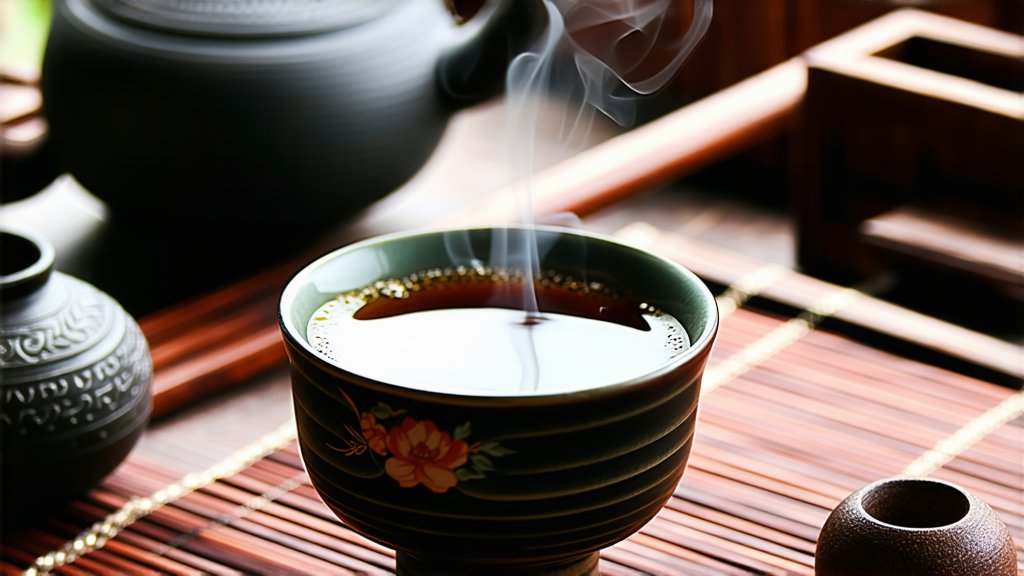
The world of tea is vast and varied, with each variety offering its own unique flavor profile and cultural significance. Among the myriad options available, Keemun black tea stands out as a quintessential representation of China's rich tea heritage. This article delves into the historical roots, varieties, production processes, and tasting techniques of this exquisite beverage, providing an in-depth exploration for international readers eager to understand and appreciate the art of Keemun tea.
Historical Background
Keemun black tea, also known as Qimen black tea, hails from Qimen County in Anhui Province, China. Its history dates back to the early 19th century when it was first created during the Qing Dynasty. Named after the local river, Keemun River, this tea quickly gained popularity for its distinctive taste and aroma. It played a significant role in opening up China's tea trade with the West, particularly during the height of the British Empire's influence in Asia.
Varieties of Keemun Black Tea
Keemun black tea is not a single type but rather a category that includes several sub-varieties, each with its own unique characteristics. The two most prominent types are Keemun Mao Feng and Keemun Hao Ya.
-
Keemun Mao Feng: This variety is characterized by its full-bodied flavor and rich aroma. The leaves are typically larger and more robust, offering a complex taste profile that includes hints of orchid and fruity undertones.
-
Keemun Hao Ya: Known for its golden tips and smoother texture, Keemun Hao Ya is often considered more delicate compared to Mao Feng. It has a slightly sweeter taste with floral and honeyed notes, making it a favorite among those who prefer a lighter black tea.
Production Process
The production of Keemun black tea is a meticulous process that involves several key steps:
-
Withering: Freshly picked tea leaves are spread out in a thin layer to allow them to wilt and lose moisture. This step is crucial for softening the leaves and preparing them for the next stages.
-
Rolling: The withered leaves are then rolled to break down cell walls, releasing enzymes that will interact with the leaf’s natural chemicals. This rolling process also helps to shape the leaves and contribute to the final appearance of the dried tea.
-
Oxidation: The rolled leaves are spread out again to undergo oxidation, where they are exposed to oxygen. This enzymatic reaction turns the green leaves brown and develops the characteristic flavors and aromas of black tea.
-
Firing: Finally, the oxidized leaves are dried using hot air or direct heat. This step halts the oxidation process and reduces the moisture content, ensuring the tea can be stored without spoiling.
-
Sorting and Grading: Once dried, the tea leaves are sorted and graded based on their size, quality, and appearance. Higher-grade leaves often have more tips and a more uniform look.
Tasting Techniques
Tasting Keemun black tea is an art form that allows one to fully appreciate its nuanced flavors and aromas. Here are some steps to follow for an optimal tasting experience:
-
Preparation: Use freshly drawn, cold water and bring it to a boil. Allow it to cool slightly before pouring over the tea leaves. The ideal water temperature for brewing Keemun black tea is around 90-95°C (194-203°F).
-
Leaf-to-Water Ratio: Generally, use about 3 grams of loose leaf tea per 200 ml of water. Adjust according to personal preference for a stronger or milder brew.
-
Steeping Time: Steep the tea for 3-5 minutes. Oversteeping can lead to a bitter taste, while understeeping may result in a weaker flavor profile.
-
Observation: Pay attention to the color of the brewed tea, which should be a deep amber or copper hue for high-quality Keemun. The aroma should be fragrant with notes of orchid, fruit, and a slight smokiness.
-
Sipping and Savoring: Take small sips to fully experience the complexity of flavors. Notice the initial impression, mid-notes, and finish. A well-crafted Keemun black tea will offer a balanced blend of sweetness, astringency, and a long-lasting aftertaste.
In conclusion, Keemun black tea is more than just a beverage; it is a testament to centuries of Chinese tea culture and craftsmanship. From its historical origins in Qimen County to its meticulous production process and intricate tasting rituals, Keemun offers a window into the soul of Chinese tea traditions. Whether you are a seasoned tea connoisseur or a curious newcomer, exploring Keemun black tea is sure to be a rewarding journey into the heart of one of the world's oldest and most revered tea cultures.